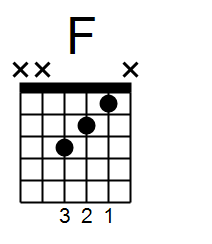A lot of beginner guitarists see being able to do a barre chord, especially an F Major one, as a deal-breaker for whether they continue learning the guitar or not. It’s not really that big a deal and certainly won’t hinder your progress on the instrument.
Why so much emphasis on barre chords? Barre chords are definitely useful on guitar because they allow you to take open chord shapes and move them around the neck without really thinking too much. They solve the problem of playing in other keys and provide a very full-sounding chord.
When are barre chords useful? Barre chords are incredibly useful when you’re playing unaccompanied as they provide a fuller sound. They also give you access to playing chord progressions in any key, as your first finger becomes a movable nut, and you can quickly knock out a chord progression when asked. Barre chords are absolutely essential if you want to be able to play classical pieces, which also requires added strength as you’ll often need to hold a barre chord while playing single notes before changing to another one and doing the same.
What if I can’t do barre chords yet? No problem, the great thing about the guitar is that there’s always more than one way to skin a cat. Here’s where a little theory helps us out a lot… For a chord to qualify as major, it must contain three basic notes. In the case of F, these notes are F, A and C. If you look at our classic F Major barre chord, you’ll see that it contains six notes:

Three of these notes are F, two of them are C and one of them is A. This is what gives it that full sound. We can strip this chord down to its bare bones and it’s still an F chord:

This is actually called an F Major Triad (F, A and C), but we’ll come to those later. If you want to add another F on top, play the following chord:

Here you’ll need to play two notes with your first finger, which will require a little extra strength at first. The one below brings your pinky into the game and is almost a barre chord. Some players find this more comfortable.

Make sure you have the right finger placement compared to the previous chord. You’ll see Jimi Hendrix, Jimmy Page and John Mayer, to name a few, play barre chords this way – even hooking their thumb over the top of the neck to play the note on the low E string. Try it for yourself if you have fairly large hands.
Checkpoint: Add the F major chord to the ones we learned in the previous sections and practice changing smoothly between them. Focus on getting all the notes to ring out cleanly and economy of movement between changes.